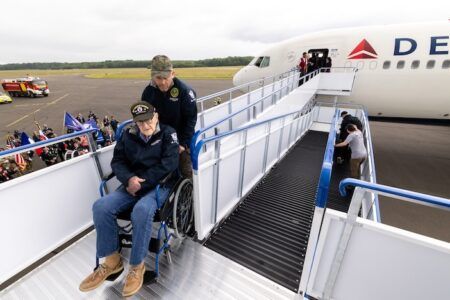Demand for the Boeing 777-300ER P2F (Passenger-to-Freighter) conversion is accelerating, driven by the need for large widebody capacity and the upcoming end of production of the Boeing 777F cargo aircraft in 2027. However, while there is growing interest from operators and lessors, there is a critical shortage of feedstock because high market retention of passenger aircraft is limiting the pace at which 777-300ERs can enter the freighter fleet.
High residual values and sustained passenger demand have prompted many operators to hold on to their 777-300ER fleets longer than originally planned, while some carriers are undertaking unscheduled cabin refurbishments, indicating extended passenger service life.
A converted 777-300ERSF in Half-Life condition is likely to cost between US$75–80 million, with costs rising closer to US$100 million if the GE90-115 engines require a shop visit. The combination of low feedstock and conversion costs means that operators and lessors will need to commit significant capital, potentially limiting the market to those with strong financial backing.
A new option, the 777-300ERSF, being developed by Israel Aerospace Industries (IAI) in partnership with AerCap, is now close to receiving FAA certification, following recent test flights in the United States using Kalitta Air’s first converted aircraft.
According to data from IBA Insight, an aviation intelligence platform, four additional 777-300ERs have been converted at IAI’s Tel Aviv facility, all belonging to AerCap’s portfolio, and they will enter service for Kalitta Air.
In addition to the Tel Aviv facility, IAI has conversion lines in Abu Dhabi (Etihad Engineering), Seoul (Sharp Technics K) and Marana, California (Ascent Aviation Services). Whilst the Marana facility has two conversion lines, both Etihad Engineering and Sharp Technics K are expected to have one conversion line each, with conversion of aircraft to start at additional locations once certification has been gained.
Mammoth Freighters has begun test flights of its 777-200LRMF prototype, with Qatar Airways announced as the launch customer. This variant will serve as the platform for Mammoth’s future 777-300ERMF conversions, offering a potentially accelerated path to certification, with AviaAM Leasing confirmed as the launch customer for the 777-300ERMF.
Mammoth is already operating conversion lines at two sites: Aspire MRO’s facility, which has capacity for up to six lines, and STS Aviation’s hangar in Manchester, where two 777-200LRs, formerly operated by Qatar Airways and Delta Air Lines, are currently undergoing conversion.
Kansas Modification Centre’s 777-300ERCF programme is also progressing, albeit at a slower pace compared to IAI and Mammoth. With only the factory-built Boeing 777F currently in production, all three P2F programmes are expected to bring much-needed options to the large widebody freighter segment.
With the ICAO emissions mandate ending 777F production in 2027, and Boeing’s freighter output capped, demand for alternative widebody freighters is intensifying. Recent Emirates 777F orders suggest that airlines are adapting amid 777X delays and limited freighter options, while for some carriers, new freighters remain cost-prohibitive, especially as options like the ageing 747-400F/BCF/BDSF become scarce.
About IBA
IBA delivers aviation consultancy expertise and actionable data insights, all delivered by an expert team.





